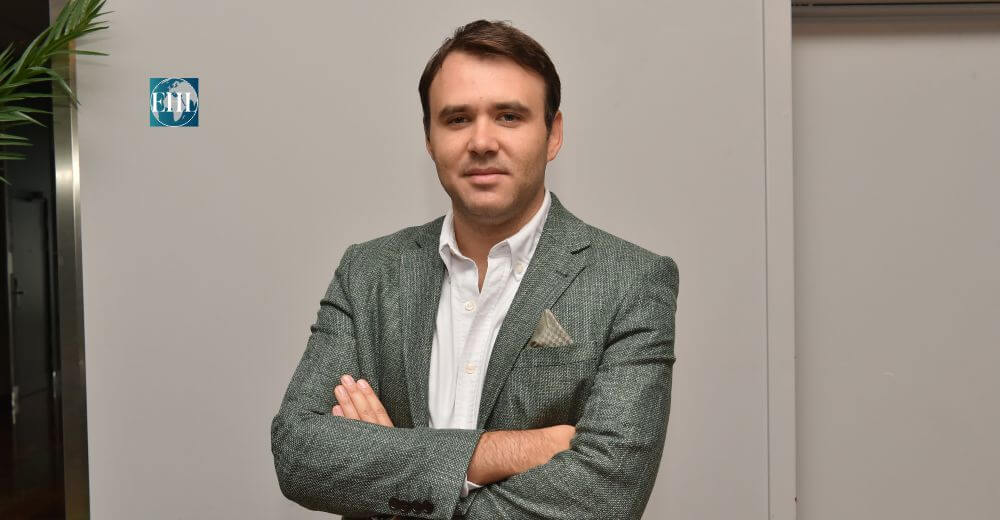Virtual care has emerged as one of the most compelling advancements in the medical field, redefining how care is delivered, perceived, and experienced. This shift is driven not only by innovation but by the growing need for a healthcare system that meets patients where they are—whether that means in the comfort of their own homes or through remote monitoring. One visionary who has successfully bridged the gap between technology and compassionate care is Patrick Landsman, a Dutch healthcare entrepreneur reshaping the way care reaches individuals in the Netherlands.
Landsman’s journey is not just one of business achievement; it’s a story rich in dedication to enhancing lives via sustainable, affordable care. His method has been driven by years of experience in different digital fields, providing him with a distinct viewpoint on how technology can benefit society. Currently, as the Managing Director of MobileCare, he is leading the way in an eHealth transformation, developing solutions that are both expandable and profoundly personal. Under his guidance, MobileCare has become a name associated with Virtual Home Care, a groundbreaking service model that enables people to live autonomously, securely, and with dignity.
Built on the foundations of accessibility, dependability, and process-oriented innovation, MobileCare’s Virtual Home Care service is at the forefront of contemporary healthcare. By prioritizing comprehensive patient wellness and alleviating the physical demands on caregivers, the company has created a framework that tackles present healthcare issues while also forecasting future requirements.
Let’s explore Landsman’s journey, MobileCare’s impact, and the exciting horizon of virtual healthcare!
Early Career and the Road to MobileCare
Landsman’s journey into the healthcare innovation space began not in hospitals or clinics, but in the realm of digital startups. His background spans diverse sectors, from SMS-based services to digital loyalty programs, a foundation that gave him deep insights into the power of technology to enhance people’s daily lives. “It’s about finding what people need most and discovering the best way to deliver it,” Landsman reflects. His involvement in launching various technology-driven services sharpened his understanding of how digital tools can solve real-world problems.
In 2009, an opportunity arose that would set Landsman on the path to Virtual Home Care: he was approached to introduce a mobile personal alarm system with GPS and fall detection for the Benelux region. This project offered him a firsthand look at the potential of technology to provide security and independence for vulnerable populations. His vision extended beyond a single product; he foresaw a future where digital healthcare could allow individuals to lead independent lives while remaining connected to essential care services. Over the years, his initial project evolved, with new layers of service and innovation added to meet the complex needs of patients and caregivers alike.
In 2016, driven by his insights and extensive field experience, Landsman drafted a comprehensive blueprint outlining how technology could facilitate independent living for longer. This blueprint was tested in 2017, with a pilot program in Groningen in partnership with major industry players, including VodafoneZiggo. The project’s success laid the groundwork for what would eventually become MobileCare’s flagship service: Virtual Home Care.
Building the Blueprint for Virtual Home Care
Landsman’s vision for MobileCare centers on three key pillars: technological innovation, process refinement, and human-centered care. “Technology is just a tool; it’s how you use it that makes the difference,” he explains. For him, Virtual Home Care is not just about deploying devices or software; it’s about redesigning the entire care pathway to incorporate digital tools while prioritizing patient and caregiver satisfaction.
He points to the importance of understanding the care process, emphasizing that “where technology is used, it must be compensated by a personal touch.” Virtual Home Care, as he developed it, is about striking a balance between digital and human elements. Recognizing that a shift to digital care could strain trust between healthcare workers and patients, Landsman prioritized transparency and collaboration in his blueprint. This approach allowed him to gradually gain the confidence of healthcare professionals, an achievement he considers one of the program’s foundational successes.
Central to this vision was his goal of reducing the burden on family members and caregivers. “A well-functioning support system makes a world of difference,” he notes. By streamlining the support provided to patients, MobileCare’s model relieves caregivers from the constant demand for physical presence, allowing them to be more attentive without experiencing burnout. This approach creates a sustainable model where patients receive consistent, high-quality care that is both proactive and responsive.
What Sets MobileCare Apart
Operating with nationwide coverage and supporting 70 healthcare organizations across the Netherlands, MobileCare has emerged as a leader in virtual care. One of its defining aspects is the “one-stop-shop” approach, offering end-to-end services under a single umbrella. “It’s about making things simpler for everyone involved,” Landsman asserts, emphasizing how the company’s all-inclusive model—from training to telecare—helps healthcare organizations and individuals avoid a maze of scattered services.
MobileCare’s distinctive pricing structure also sets it apart. The company operates on a subscription model with a fixed price, covering everything from CAPEX to ongoing support, without hidden fees or variable costs. “Budgeting for healthcare should be straightforward, without surprises,” Landsman states. This transparent model makes it easy for healthcare organizations to plan financially, while patients and families appreciate the consistency in service costs.
Innovating for Independence
Virtual Home Care offers patients a range of services tailored to their individual needs. For instance, MobileCare enables patients to carry out daily activities, such as showering, with remote supervision. This allows them to maintain their independence while knowing they have a safety net. Other innovations include advanced monitoring solutions, such as blood sugar sensors that automatically relay data to healthcare providers. “We wanted to make healthcare less intrusive but still incredibly effective,” Landsman explains. This personalized, adaptable model allows the company to support each patient in a way that fosters confidence and autonomy.
One of the company’s standout innovations is its EKD platform, which integrates various technologies into a unified system connected to patient records, monitoring services, and alarm centers. The platform allows seamless communication across care teams, ensuring patients receive timely interventions and support. This interconnected approach has proven instrumental in making virtual care feel tangible, relevant, and accessible.
Trends and Challenges in Dutch Healthcare
Landsman is keenly aware of the broader trends shaping the healthcare landscape in the Netherlands. While artificial intelligence and voice-based technologies are capturing headlines, he believes that the core of healthcare innovation lies in responding to the evolving needs of patients themselves. “What we’re seeing now is a demand for prevention and private care services, driven by patients’ desires for more control over their health,” he observes. Landsman’s approach aligns with this shift, as MobileCare’s Virtual Home Care model emphasizes patient autonomy and preventive care.
The challenges in this field are substantial. Convincing healthcare professionals to embrace hybrid digital care models has required a delicate balance of trust-building and tangible results. Financing is another major hurdle, with policymakers often grappling with distinctions between healthcare, welfare, and personal responsibility. “There’s a tendency to view everything in boxes,” he says, “but real well-being reduces the need for formal care.” By shifting the conversation towards long-term outcomes, he’s been able to make headway, but he acknowledges the need for continued advocacy to secure stable funding for virtual care initiatives.
The Pandemic and the Shift in Attitudes Toward Virtual Care
The COVID-19 pandemic marked a turning point for MobileCare and for the virtual healthcare sector as a whole. When in-person interactions were limited, virtual care became not only practical but essential. Landsman recounts how demand surged in the months following the first wave of the pandemic, with user numbers doubling each month. “COVID forced a change in perspective, both for patients and healthcare providers,” he notes. As more people experienced the benefits of remote care, virtual solutions gained legitimacy, proving they could deliver quality care even without physical contact.
This increased adoption brought valuable insights, showing that while remote care might initially be viewed as a last resort, it can actually offer benefits beyond traditional care models, particularly for individuals seeking greater independence. For Landsman, this has reinforced the importance of providing accessible, flexible solutions that can adapt to both patient preferences and external challenges.
Rewards and Reflections
Reflecting on his role, Landsman finds immense satisfaction in the positive feedback from clients and their families. “The thank-you notes and cards we receive remind us of why we do this,” he shares. Knowing that MobileCare’s services have a meaningful impact on individuals’ lives is, for him, the most rewarding aspect of his work. This appreciation underscores the broader impact of the company’s mission, as patients and their families experience firsthand the benefits of a care model designed with their needs in mind.
A significant challenge for Landsman has been scaling the company without compromising service quality. This required a flexible approach, encouraging his team to experiment with processes before standardizing successful models. “We didn’t try to perfect everything upfront; we learned as we went along,” he reflects. Through this iterative process, MobileCare has managed to grow while maintaining a high standard of care.
The Path Ahead for MobileCare
As MobileCare approaches its goal of reaching half of the Netherlands’ target patient base, the company’s ambitions extend beyond national borders. Landsman envisions the company evolving into a European leader in preventive health services. This future includes expanded services that empower patients to take control of their health with even more robust digital solutions.
He offers a piece of advice for aspiring healthcare innovators: “Define the problem you’re solving, and make sure it’s meaningful.” His focus on economic sustainability, alongside patient care, is a reminder that innovation in healthcare must be both impactful and financially viable. By looking beyond, the technology itself to consider the broader ecosystem, Landsman has built a model that not only meets today’s needs but anticipates tomorrow’s challenges.
Defining a New Era in Healthcare
Landsman’s journey with MobileCare illustrates how thoughtful innovation can transform not just services, but lives. By merging technology with a compassionate approach to care, he’s championing a model that emphasizes independence, preventive health, and simplified access to essential services. Under his guidance, MobileCare’s Virtual Home Care has become more than a service; it’s a movement towards patient-centered healthcare that values both the human touch and the benefits of digital solutions.
As the company looks to expand beyond Dutch borders, Landsman’s vision offers a roadmap for future healthcare leaders: blend innovation with empathy, ensure sustainability, and always put people first. His work is a reminder that in a world driven by advancements, the true power of technology lies in its ability to enhance human connection and well-being.









